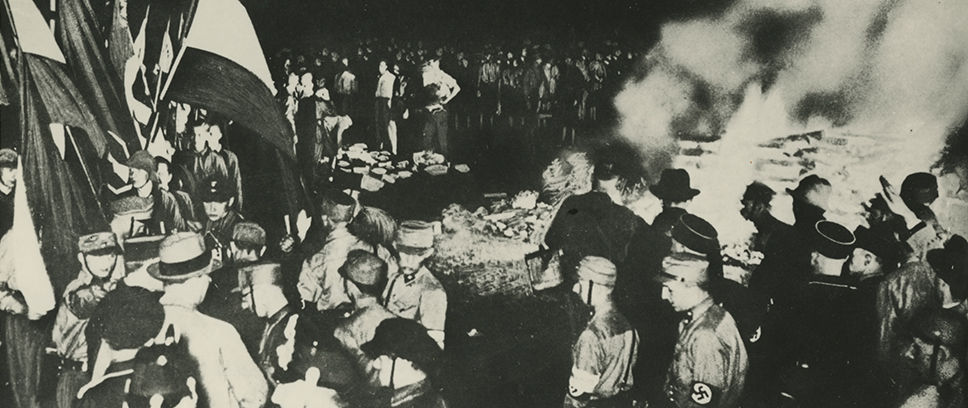
Consigned to the Flames
On the 90th anniversary of the Nazi book burnings throughout Germany on 10 May 1933
Charlotte Lenz | 10 May 2023
Ninety years ago, on 10 May 1933, the German Student Union organised a nationwide burning of books that were considered ill-suited to Nazi doctrine. The works of countless authors were thus irretrievably consumed by the flames on fanatical, ideological grounds. In remembrance and admonition, Charlotte Lenz, staff member of the DHM Library, reports on the background and consequences of these illicit actions – which are also seen here from the perspective of libraries and their employees.
We’re in the year 1933. More precisely in the night of the 10th to the 11th of May. Since around 9:30 pm, it’s pouring rain at Opernplatz in Berlin. Nonetheless, there’s much to be seen: eight tall piles of books which are kept burning for hours with the aid of a company specialising in pyrotechnics. They constantly feed the fire with logs, but above all with more and more books. Thousands of people are gathered here to watch one of the most significant and attention-grabbing events from the beginning of National Socialism in Germany. Thousands of works by famous and unknown authors are being destroyed here.[1] But the spectacle can be witnessed not only in Berlin. In more than 20 other German cities, books are being burned at this time. In addition, numerous less spectacular book burnings are carried out in other parts of Germany between April and June 1933. While most of the onlookers are spellbound as they see the banned books being consigned to the flames and hear the solemn declamations that accompany them, there are others who stand there aghast, asking themselves how this ever could have happened.
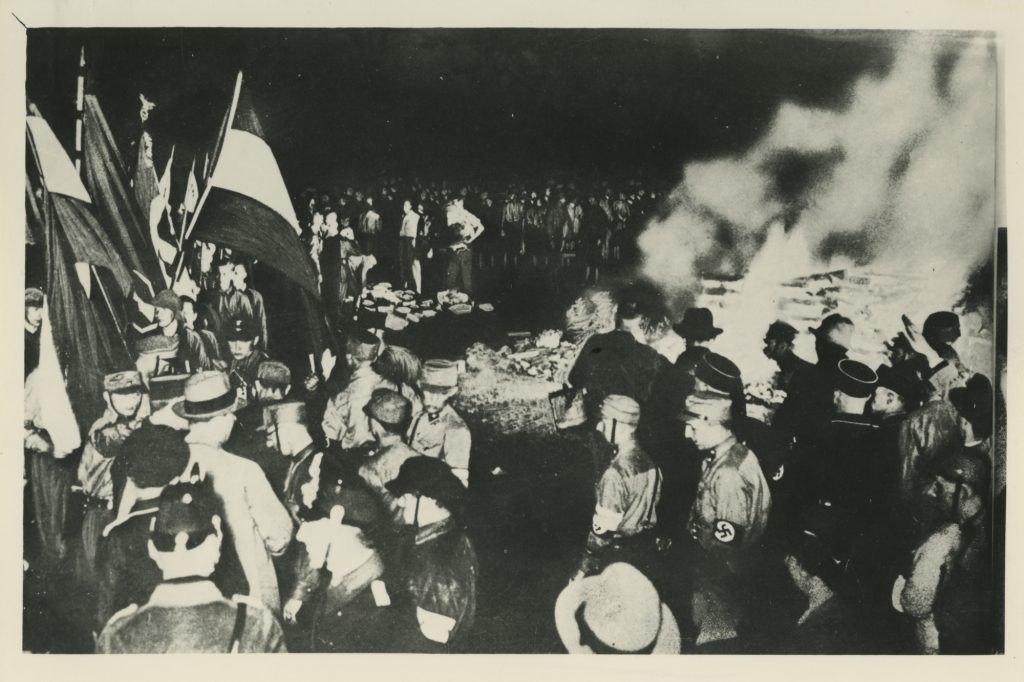
Almost from the start of the transfer of power to Adolf Hitler at the end of January 1933, influence was exerted by right-wing extremists in all areas of political and social life. This could be strongly felt in German cultural and literary policy, where the Nazis pursued the aim of “decontaminating” public life and morally “cleansing” the German people.[2] From this time on, books were to serve as a means to spread propaganda and to direct the people in their political education. Further measures provided for the elimination of works by Jewish authors, and other politically undesirable writers, from bookshops and libraries and introduced a much stricter censorship of new works that were to be published. For the cleansing of the various cultural organisations, including museum collections as well as libraries, so-called blacklists were complied which listed all of the publications that were now banned. It is interesting to note that in the beginning it was primarily politically engaged librarians like Wolfgang Herrmann, Max Wieser and Hans Engelhardt who participated in compiling these lists, and that at first it was only a ban on the use the proscribed books that was recommended. From 1935 on, such blacklists received the official title List of harmful and undesirable literature and were published once a year by the responsible office – the Reichsschrifttumskammer (Reich Chamber of Literature).
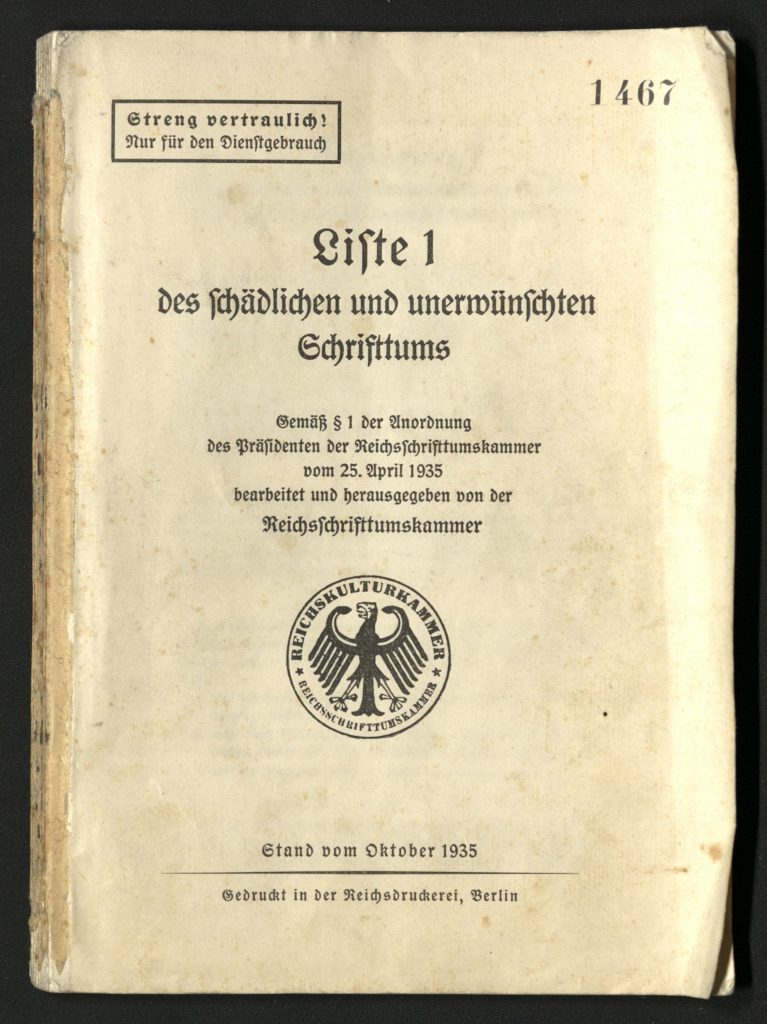
A study on the phases and actors of the book burnings in 1933,[3] published in 2008, came to the conclusion that the Hitler Youth and the German Student Union were the principal initiators and organisers of the actions. The students based their plans for the May 10th book burning on the first list compiled by Wolfgang Herrmann. He had put the list together on his own initiative at the beginning of 1933, based on his firm belief in the Nazi worldview.[4] Preparations for the high point of the Action against the Un-German Spirit had already begun at the beginning of April when the main office for press and propaganda of the German Student Union announced in a bulletin that an action was planned for the time between 12 April and 10 May. Even though every student was called upon to check their own stock of books and those of their friends and relatives for anti-regime literature and to participate in the purging of forbidden books in the public libraries and generally to engage themselves in the awareness-raising actions,[5] doubtless only a minority of them really foresaw the magnitude of the coming censorship or imagined what would become of the books.
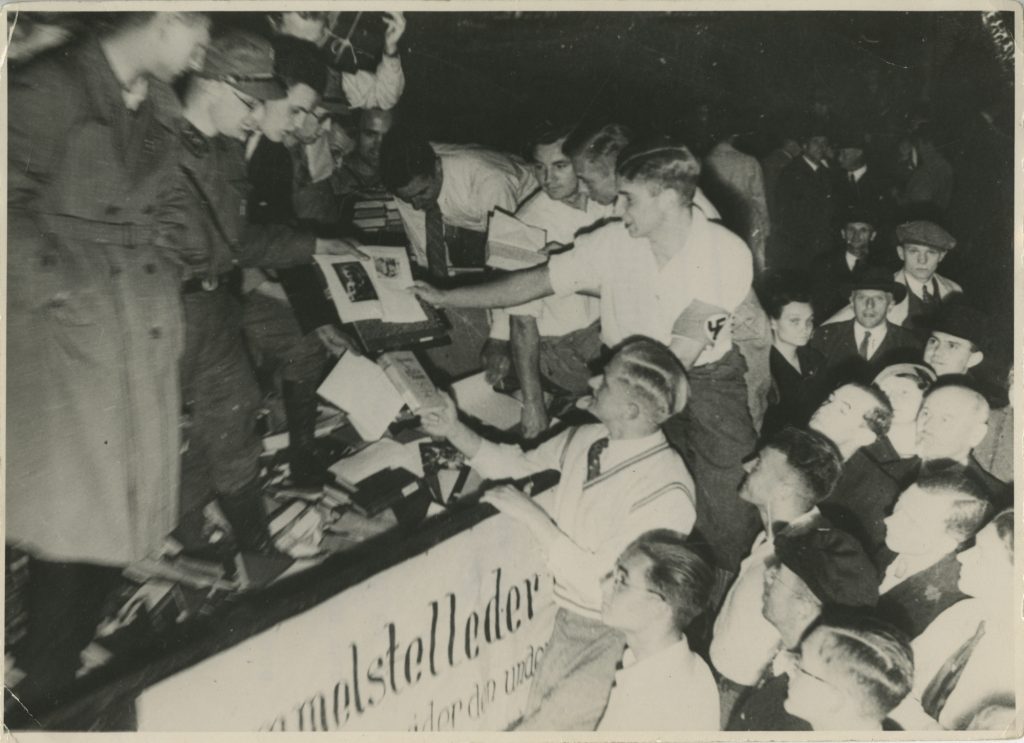
The authors didn’t have to do much to attract the attention of the Nazis to themselves or their works and thus to land on the blacklists. All publications were censored when there was even a suspicion that they might contain treacherous political opinions and/or moral decadence, or simply because they were written by Jewish authors. Even the books of deceased writers were put on the blacklists. Among the thousands of volumes burned on 10 May 1933 – at Berlin Opernplatz and elsewhere – were publications by Arthur Schnitzler, Joachim Ringelnatz, Klaus and Heinrich Mann, Karl Marx, Kurt Tucholsky, Erich Kästner and Anna Seghers.
Numerous libraries and their employees in the Nazi period evidently played a significant role in supporting the operation organised by the students. They participated not only in assembling the works that were to be banned, but also allowed these works to be discarded from their stocks, at least from the public libraries. While many of them shared the Nazi ideology, the fact that the entire library system was under the supervision of the Nazi Party[6] no doubt also played a role in their willingness to cooperate. Many libraries also benefited from the confiscation of public or private book collections that were carried out in the course of the Aryanisation campaigns, because the illicitly confiscated books were transferred to their own collections.
Nevertheless, it was not possible for the adherents of the German Student Union to seize and destroy all copies of the proscribed books. A decree for scientific libraries issued by the “Prussian Minister for Economy, Art and Public Education” declared that the “confiscation” and destruction of “Jewish and Marxist literature in the scientific libraries” [7] was entirely out of the question. However, their use was to be limited only to persons with clearly scientific interest. By abiding by this decree, courageous librarians were able to prevent the destruction of many works that were considered important at the time and even today and preserve them behind their thick library walls. This has given us the opportunity to hold works in our hands that were designated to be tossed into the flames. For many years, numerous institutions have participated in active provenance research in order to identify works that may have been dubiously acquired; through restitution to the descendants it is hoped, at least in small part, to make up for the damage incurred at the time.
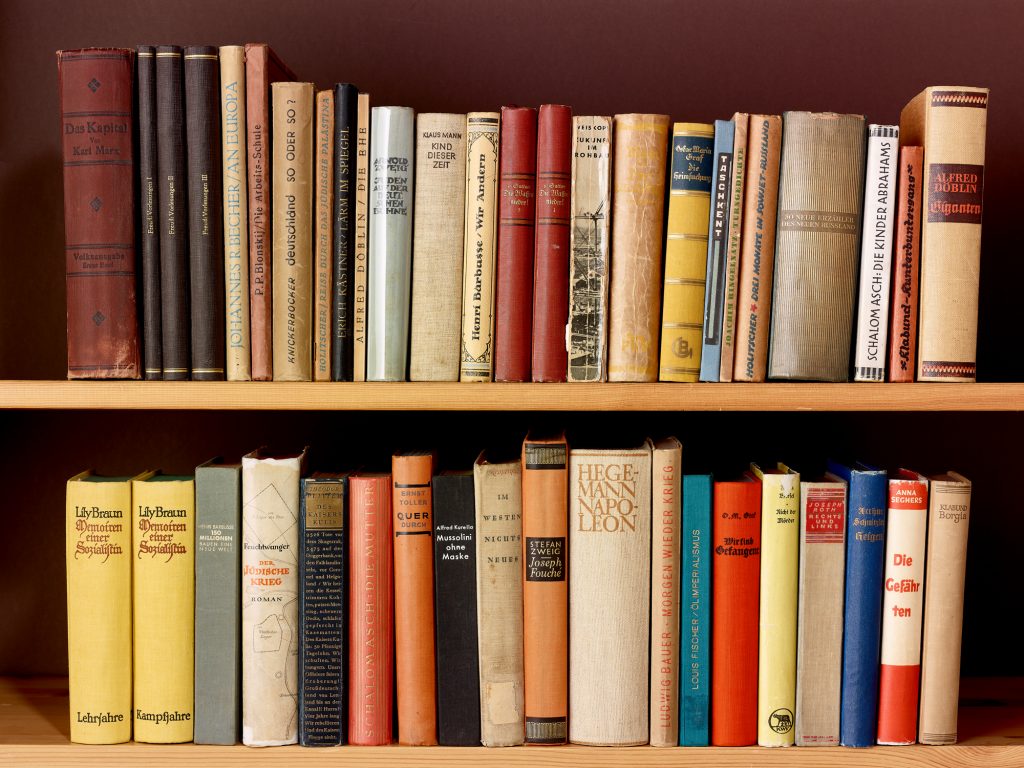
In remembrance of the 90th anniversary of the book burnings on 10 May 1933 and because book censorship is still a topic of interest today, a small showcase exhibition of some of the most famous works that were saved from the flames can be seen in the DHM Library, until August 2023. The display is accessible in German during the regular opening hours, Mon–Fri, 9 am to 3 pm.
[1] Cf. Weidermann, Volker: Das Buch der verbrannten Bücher, 2. Auflage, 2009, p. 12
[2] Cf. Koch, Christiane: Das Bibliothekswesen im Nationalsozialismus, Stuttgart: Hochschule für Medien, 2022, p. 7
[3] Tress, Werner: Phasen und Akteure der Bücherverbrennungen 1933, in: Schoeps, Julius H. / Treß, Werner: Orte der Bücherverbrennungen in Deutschland 1933, p. 25
[4] Vgl. https://de.wikipedia.org/wiki/Wolfgang_Herrmann_(Bibliothekar) Last accessed: 07.03.2023
[5] Cf. Koch, Christiane: Das Bibliothekswesen im Nationalsozialismus, Stuttgart: Hochschule für Medien, 2022, p. 26
[6] Cf. ibid., p. 11
[7] Ibid., p. 63
|
|
Charlotte LenzCharlotte Lenz is Deputy Keeper of the Library of the Deutsches Historisches Museum |
